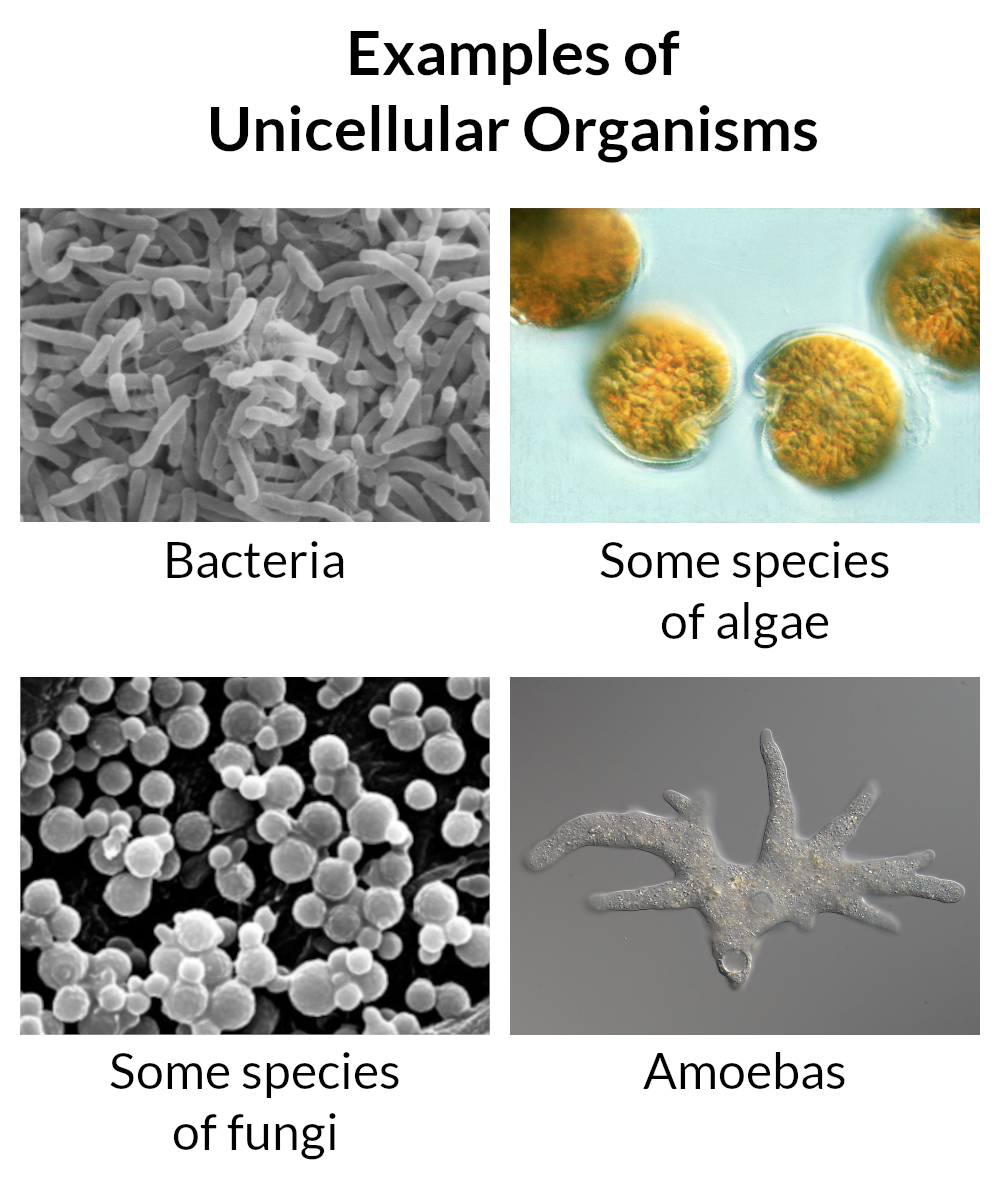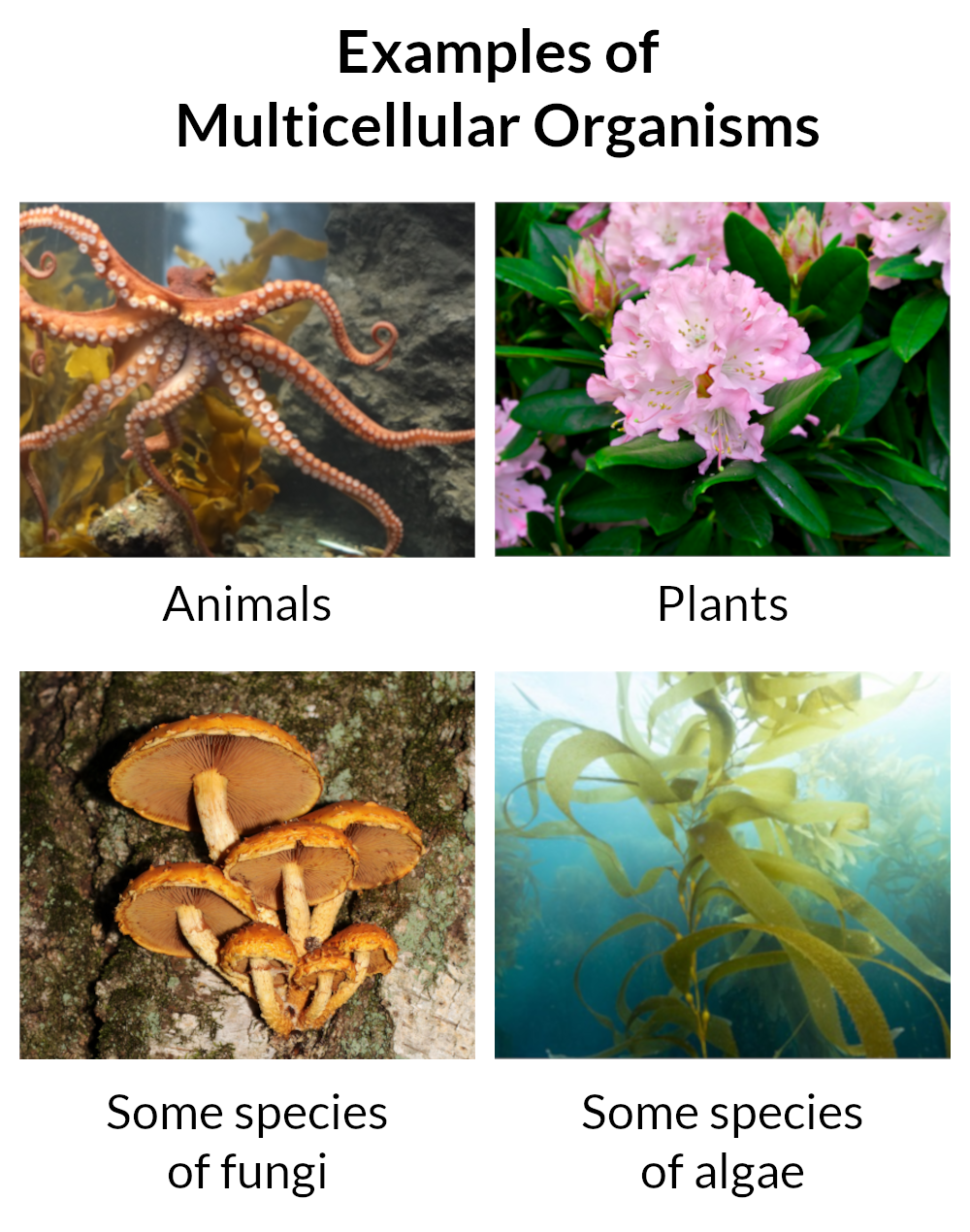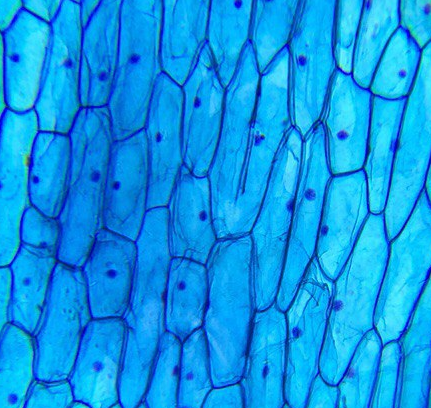GCSE Biology - AQA
1.1.1 - Introduction to Cells
Jump to:
Introduction to Cells
All living things are made up of tiny structures called cells. Cells are the basic building blocks of all living organisms.
Unicellular organisms
Some organisms (living things) are made up of just one cell. These are called unicellular organisms.
Examples of unicellular organisms include:
- Bacteria
- Some species of algae
- Some species of fungi (unicellular fungi are called yeasts)
- Some other organisms, such as amoebas

Unicellular organisms are organisms made up of a single cell. Examples include bacteria, some types of algae, some types of fungi and amoebas. (Algae image: CSIRO on Wikimedia Commons; Fungi image: Ran Yuping et al. on Wikimedia Commons; Amoeba image: SmallRex on Wikimedia Commons)
Multicellular organisms
Other organisms are made up of multiple cells. These are called multicellular organisms.
Examples of multicellular organisms include:
- Animals
- Plants
- Some species of fungi
- Some species of algae

Multicellular organisms are organisms made up of multiple cells. Examples include plants, animals, some species of fungi and some species of algae.
Sub-cellular structures
Within each cell there are many small structures. These are called sub-cellular structures. Each sub-cellular structure has its own specific function.
Examples of sub-cellular structures include the nucleus, the cell membrane and ribosomes. The functions of these and other sub-cellular structures will be explored later in the course.

Diagram of an animal cell, with its sub-cellular structures labelled.

Onion cells viewed through a microscope. Each cell's nucleus and cell wall are visible (note: the cells have been stained to make these structures visible). Image adapted from 'Onion skin cells under a microscope' by Katekor1 on Wikimedia Commons
Flashcards
Flashcards help you memorise information quickly. Copy each question onto its own flashcard and then write the answer on the other side. Testing yourself on these regularly will enable you to learn much more quickly than just reading and making notes.
1/4
What are cells?
2/4
What are organisms that are made up of one cell called?
3/4
What are organisms that are made up of multiple cells called?
4/4
What are sub-cellular structures?
Donate
Please consider donating to support Mooramo. I am one person doing this whole project on my own - including building the site, writing the content, creating illustrations and making revision resources. By making a one-time or repeating donation you will buy me time to work on Mooramo, meaning that I can get new content on here more quickly.
Donate